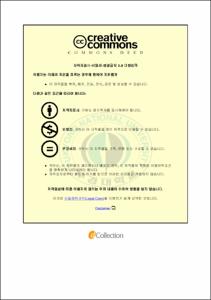고등학교 영어 독해와 작문 교과서의 수동태 분석
- Abstract
- An Analysis of Passives in High School English Reading and Writing Textbooks
Aram Han
Graduate School of Education
Pukyong National University
Abstract
The national curriculum of English, which is named 2007 revised curriculum, focuses on communicative competence or fluency. Thus, English classes more and more focus on communicative competence without considering some important or high frequency English grammar items such as passive. In fact, a lot of English learners in Korea avoid using passive form because of its difficulty and form which is different from Korean passive forms.
The purposes of this study are
ⅰ) to analyze frequency of passive sentences in the high school English reading and writing text books,
ⅱ) to classify the characteristics of the passive in textbooks,
ⅲ) to classify the characteristics of three different sort of corpus, and
ⅳ) to compare the passives in textbooks with other kinds of corpus
This study consists of five parts. The first part presents the necessity, purpose and limitation of this study. The second chapter reviews the previous studies and theories about passive. The third part presents analysis criterion and how to analyze the text books and corpus. The fourth part deals with the results of the analysis of corpus and textbooks and presents discussion about results. The last fifth part summarizes the study and come to conclusion and some suggestion for teaching passive in the class.
The main results of analysis of textbooks are as follows: Firstly, thirteen percent of sentences used in the textbook corpus are passive. Secondly, the length of subject is not related to choosing either passive or active. Thirdly, more passive sentences are used when the subject of sentence is animated. Fourth, passive sentences in textbooks are combined with tenses and aspects. Fifth, almost passive sentences are used without their agents, that is, the short passive are a lot more frequently used than passives with agents. Lastly, the subjects of passive sentences are used as the subjects of relative clauses or 'be + past participle' is not immediately followed by insertion conjunctions or apposition clauses.
This study suggests that teaching passive in context is more effective in order to developing both students' fluency and accuracy according to current teaching curriculum. Next, teachers have to teach students that when passive is used and what meaning of passive is so that make students use passive correctly. Finally, teachers use not only a course book but also other authentic materials such as novels or journals which are realistic in usage.
- Issued Date
- 2011
- Awarded Date
- 2011. 8
- Type
- Dissertation
- Publisher
- 부경대 교육대학원
- Department
- 교육대학원 영어교육전공
- Advisor
- 박순혁
- Table Of Contents
- Ⅰ. 서론 1
1.1 연구의 필요성 및 목적 1
1.2 연구의 제한점 4
Ⅱ. 이론적 배경 5
2.1 수동태의 정의와 종류 5
2.1.1. 수동태의 정의 5
2.1.2 수동태의 형태 8
2.2 선행 연구 10
Ⅲ. 연구방법 14
3.1 분석 기준과 요소 14
3.2 코퍼스 분석 방법 16
3.3 교과서 분석 방법 17
Ⅳ. 연구내용 19
4.1 코퍼스 분석 내용 19
4.1.1 수동태 문장의 비율 19
4.1.2 수동태의 주어 20
4.1.2.1 주어의 표면적 특징 21
4.1.2.2 주어의 속성 - 유생성 23
4.1.3 문법적 상에 따른 분류 26
4.1.4 수동문의 동사 27
4.1.5 주어와 [be동사+과거분사]의 거리 29
4.2 교과서 분석 내용 31
4.2.1 수동태 문장의 비율 31
4.2.2 수동태의 주어 31
4.2.2.1 주어의 표면적 특징 31
4.2.2.2 주어의 속성 - 유생성 36
4.2.3 문법적 상에 따른 분류 38
4.2.4 수동문의 동사 39
4.2.5 주어와 [be동사+과거분사]의 거리 40
4.2.6 수동문의 유형 42
4.3 교과서와 코퍼스의 비교 분석 45
4.4 토론 47
Ⅴ. 결론 52
참고문헌 55
- Degree
- Master
- Files in This Item:
-
-
Download
 고등학교 영어 독해와 작문 교과서의 수동태 분석.pdf
기타 데이터 / 647.28 kB / Adobe PDF
고등학교 영어 독해와 작문 교과서의 수동태 분석.pdf
기타 데이터 / 647.28 kB / Adobe PDF
-
Items in Repository are protected by copyright, with all rights reserved, unless otherwise indicated.